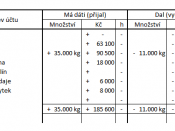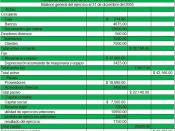a) The bank unveiled a plan to tackle community concerns so that it would be seen in a more positive light. Because banks offer services which are so essential (providing an opportunity to exploit customers), they deal with high levels of customers and generally make large profits. Also, interest rates naturally fluctuate between high and low levels (controlled by the government to manage inflation - not the individual banks). For these reasons they have developed a generally bad reputation with the public (exacerbated by Credit Union advertisements etc). By making this voluntary disclosure to the public, ANZ is trying to "win over" customers by showing their concerns for the community. This is an example of Positive Accounting Theory (PAT) - a theory which attempts to explain and predict how groups in an organisation (eg. management, owners, creditors; stakeholders) will interact with one another. In this case, ANZ has made a voluntary social disclosure to the public (ie.
its customers) in order to "soften the blow" of the political costs which are often imposed on banks.
b)
Because the majority of the voting public are also customers of one of the big four banks in Australia (Commonwealth, NAB, ANZ & Westpac), external political costs are often imposed on the banking industry. Because banks make such large profits, they are seen as "villains" by the public - providing a big target for politicians to aim at. PAT predicts that governments will act in a way to please the voting public so that they will stay in power. This article draws particular reference to the fact that it is an "election year" - this means that politicians make particular efforts to make sure that they are seen as bringing the "big bad banks" into line.
c)
Yes, I believe that community concern would...



Where are the sources??
Sources are not stated. They must be to give its authenticity. Wasn't arranged coherently.
Poorly Done.. These seem to be answers to questions...Where are the questions?
0 out of 0 people found this comment useful.